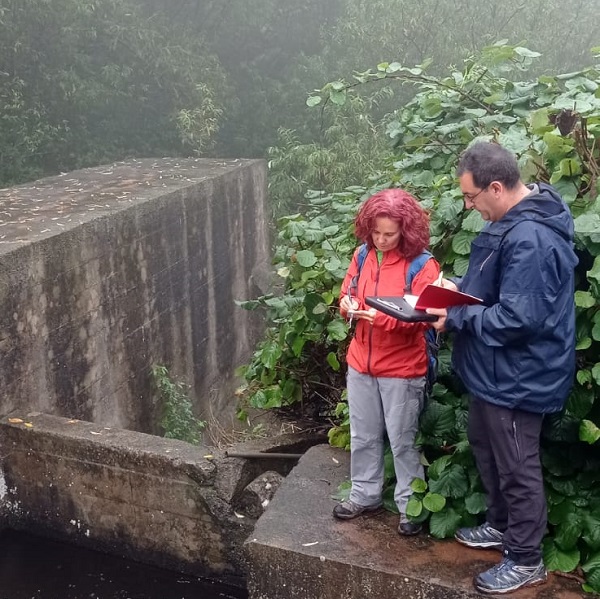Writing/Irene Vega
The changes in the rainfall regime (quantity, type, seasonality) and the evolution of the use of natural resources (agriculture, tourism) associated with the so-called climate and global change are having an impact on the flows of the Garajonay springs. These natural springs through which groundwater rises to the surface are of considerable interest, both natural, for the ecosystems they maintain and feed, and human and social, since they are a source of supply for populations and crops throughout the island, and the object of a whole culture of management and use of water.
To quantify the changes that are taking place in these springs, find out their origin and promote measures to mitigate the harmful effects, a scientific-technical team from various centers has undertaken an ambitious research project financed by the Autonomous Organization of National Parks (OAPN ): the IVRIPARC project 'Impacts, vulnerability and resilience of Geodiversity and Geological Heritage in the face of Global Change in the Canary National Parks'. This consortium is made up of the Geological and Mining Institute of Spain-CSIC, the universities of La Laguna, Las Palmas de Gran Canaria, UNED, Complutense of Madrid and Rey Juan Carlos, and the Museum of Nature and Archeology of Tenerife.
The scientific-technical team, in collaboration with the Garajonay National Park and the Insular Water Council of the Cabildo de La Gomera, will carry out research to better understand and protect this natural heritage from the harmful effects of climate change. Over the next three years, a significant number of springs will be studied, their flows will be measured continuously with automatic instruments (limnigraphs) and a complete meteorological station will be placed in the upper area of the park - where the aquifers of the springs are recharged - with data transmission of precipitation, temperature, etc., every five minutes to a computer cloud. In addition, periodic samples of water will be taken in the springs to analyze its isotopic chemical composition and find out how long it has been since it infiltrated until how long it has flowed through the aquifer. The professor of the Geology Area of the URJC, Raquel Herrera Espada, participates in this project contributing her knowledge and experience on the geology and hydrogeology of the island of La Gomera.

Image: Professor Raquel Herrera Espada, together with Andrés Díez Herrero (IGME-CSIC researcher), taking data in the Garajonay National Park during the field campaign of the IVRIPARC project.
These springs are part of the many and varied natural values of the Garajonay National Park and are part of the geological heritage of La Gomera, being the most sensitive and vulnerable Places of Geological Interest in the entire inventory. Thanks to this project, it is expected to be more prepared for their future evolution and to preserve them against changes.
Source: Geological and Mining Institute of Spain (CSIC)



